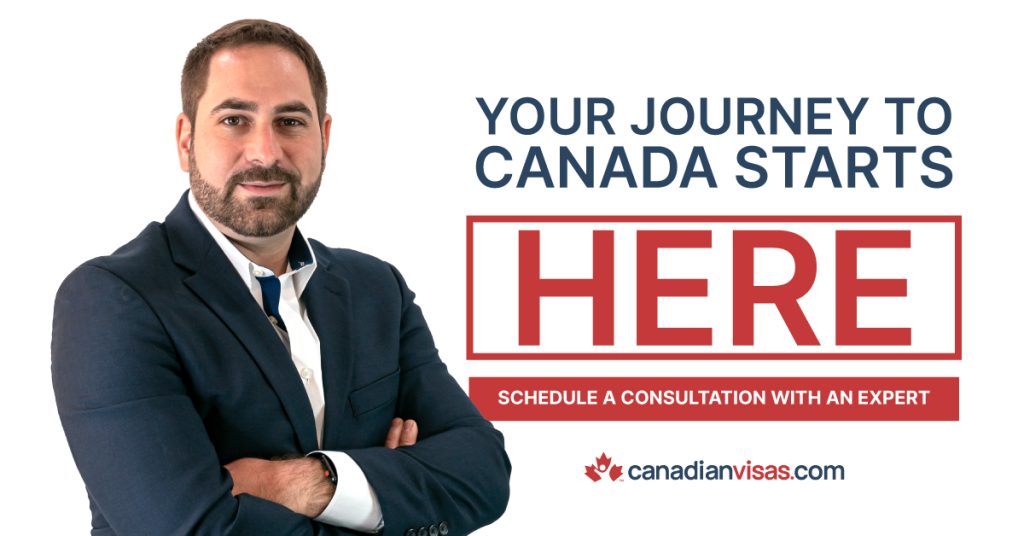
Apr 24, 2024 | Business Immigration, Canadian Experience Class, Citizenship, Complete Representation, Federal Skilled Trades, Humanitarian & Compassionate, Permanent Residency, Processing Times
The National Occupational Classification (NOC) is a standardized system used to classify and categorize occupations in Canada. This system is used for various purposes, including immigration, labor market research, and wage reporting. For immigrants to Canada, the NOC is an essential tool for understanding their eligibility for certain immigration programs and for finding work in their field.
What is the NOC?
The NOC is a five-tiered hierarchical structure that classifies occupations based on their skill level, education, training, and experience requirements. There are 10 broad occupational categories, 45 major groups, 89 minor groups, 162 minor groups, and 516 unit groups. Each unit group is assigned a unique four-digit NOC code.
How is the NOC used for immigration?
The NOC is used by Immigration, Refugees and Citizenship Canada (IRCC) to assess the eligibility of applicants for certain immigration programs, such as the Express Entry system. The NOC code of an applicant’s occupation is one of the factors that is used to calculate their Comprehensive Ranking System (CRS) score. A higher CRS score means that an applicant is more likely to be invited to apply for permanent residency.
How can I find my NOC code?
There are a few ways to find your NOC code. You can search for it by job title using the NOC website: https://www.canada.ca/en/immigration-refugees-citizenship/services/immigrate-canada/express-entry/eligibility/find-national-occupation-code.html, or you can browse the NOC structure by occupational category. You can also find your NOC code in job postings.
What are some tips for using the NOC for immigration?
- Make sure you are using the correct NOC code. The NOC was updated in 2021, so make sure you are using the most recent version of the code.
- Choose a NOC code that is closely related to your occupation. If you are not sure which NOC code to choose, you can contact an immigration consultant or job counselor.
- Be prepared to provide evidence of your work experience. When you apply for an immigration program, you will be asked to provide evidence of your work experience. This may include job letters, transcripts, and references.
The Most Common NOC Classifications for Immigrants to Canada
The following table shows the most common NOC classifications for immigrants to Canada in 2021:
Please note that this is just a small sample of the many NOC classifications that are relevant to immigrants to Canada. The best way to find the NOC code that is right for you is to search the NOC website or to contact an immigration consultant.

Additional tips for using the NOC for immigration
- Consider your skills and experience. When choosing a NOC code, it is important to consider your skills and experience. What are you good at? What experience do you have? Choose a NOC code that is a good match for your skills and experience.
- Research the job market. Once you have chosen a NOC code, it is important to research the job market for that occupation. Is there a demand for workers in that occupation? What are the average salaries for that occupation?
- Be prepared to adapt. The Canadian job market is different from the job market in many other countries. Be prepared to adapt your skills and experience to meet the needs of the Canadian workforce.
Conclusion
By understanding the NOC and how it is used for immigration, you can increase your chances of successfully immigrating to Canada and finding work in your field.

Mar 12, 2024 | Business Immigration, Canadian Experience Class, Citizenship, Complete Representation, Federal Skilled Trades, Humanitarian & Compassionate, Permanent Residency, Processing Times
Invitation to Apply for Permanent Residence Canada (ITA)
If you are interested in becoming a Permanent Resident of Canada, you will need to be invited through an Invitation to Apply (ITA). This ITA is a document issued by Immigration, Refugees and Citizenship Canada (IRCC). After receiving an ITA, applicants will have the chance to apply for Canadian permanent residence and bring their accompanying family members, such as their spouse or common-law partner and any dependent children, along with them.
Step-by-step process of getting an Invitation to Apply (ITA) to immigrate to Canada:
1. Create an Express Entry profile to enter the Express Entry pool.
The first step involves submitting information about your skills, language ability, education, and work experience. If you meet the criteria for immigration to Canada, you will be placed in the Express Entry pool.
2. Receive a Comprehensive Ranking System score.
You will then be given a Comprehensive Ranking System (CRS) score based on the information in your Express Entry profile. The CRS score is used to rank candidates based on their skills and other factors.
3. Boost Your CRS Score
The Comprehensive Ranking System (CRS) assigns points based on your human capital factors like skills, education, age, language proficiency, and work experience. A higher score increases your chances of receiving an ITA. Consider these strategies:
- Improve Language Skills: Aim for high scores on English or French language tests like IELTS or CELPIP. Strong language abilities are essential for integrating into Canadian society and the workforce.
- Gain Work Experience: Relevant Canadian or international experience boosts your score. Look for opportunities in fields listed in Canada’s National Occupational Classification (NOC) for additional points.
- Pursue Higher Education: A Canadian degree, diploma, or relevant post-secondary qualification can be advantageous. Consider Canadian institutions or programs approved by Canadian education credential assessment services.
- Secure a Valid Job Offer: A job offer from a Canadian employer with LMIA (Labour Market Impact Assessment) approval adds significant points and demonstrates your employability in Canada.
- Provincial Nomination: Receiving a nomination from a Canadian province/territory can significantly increase your CRS score. PNPs target skilled workers to address specific labor market needs. Research programs offered by provinces that align with your skills and experience.
4. Receive an Invitation to Apply (ITA) if your score is above the cut-off threshold score.
IRCC regularly conducts draws inviting candidates with the highest CRS scores to apply for permanent residence. The cut-off score for each draw varies depending on the number of applications received by IRCC.
If your CRS score is higher than the cut-off threshold score for that specific Express Entry draw, you will receive an ITA.
5. Submit a complete application for permanent residence (APR) in your online account.
Once you receive an ITA, you will have 60 days to submit a complete application for permanent residence (APR) in your online account. This involves providing documents such as passport, language test scores, job offer letter, and more.
Read more about: GCKey: Apply Online For Canada Immigration and Visa
6. Receive a Confirmation of Permanent Residence (COPR) and/or a Permanent Residence Visa.
After your application is approved, you will receive a Confirmation of Permanent Residence (COPR) and/or a Permanent Residence Visa.
7. Live and work in Canada as a Permanent Resident.
Finally, once you have your permanent residence visa, you can travel to Canada and live and work as a Permanent Resident.

National Occupational Classification (NOC) and Express Entry
The NOC is a system used by the Canadian government to categorize jobs based on skill level, type of work performed, and educational requirements. When creating your Express Entry profile, you’ll need to identify the NOC code that best reflects your primary work experience. Occupations in higher NOC skill levels (typically NOC 0, A or B under NOC 2016 or TEER levels 3, 4 or 5 under NOC 2021) are generally eligible for Express Entry.
Here’s how the NOC can influence your Express Entry profile:
- Eligibility: Choosing the correct NOC code ensures your work experience aligns with eligible occupations for Express Entry.
- CRS Points: Certain NOC codes may award more points under the CRS compared to others. Jobs requiring higher skill levels or those in high demand by Canadian employers tend to receive more points.
Research the NOC carefully and choose the code that most accurately reflects your main work duties. A mismatch can affect your eligibility or CRS score. You can find the NOC list and descriptions on the Employment and Social Development Canada website: Find your National Occupation Classification (NOC).
What Should You Do After You Receive an ITA
If you have received an Invitation to Apply (ITA), you have only 60 days to put together and submit all of your required supporting documents. To ensure that you’re ready to apply and make the most of the two-month period, it is important to begin collecting and organizing the necessary documents ahead of time.
In case you are unable to submit your application within the 60-day period, you will have the option to re-enter the Express Entry pool and start the process over.
How to Get an Invitation to Apply for Permanent Residence
To receive an ITA, you must first be eligible to immigrate by meeting the minimum requirements for the Express Entry pool. The Comprehensive Ranking System (CRS) score is used to assess a candidate’s eligibility.
The CRS score ranks an individual based on:
- Skills
- Education
- Language ability
- Work experience,
- and other factors.
Invitations to apply (ITA) will be given to those with a minimum CRS score or higher of that specific Express Entry draw.
Read more about: Changes in Express Entry in 2023
Documents you will need to apply for Permanent Residency
You will need the following documents to apply for a Canadian Permanent Residence:
- Passport
- Language Test score results
- Birth Certificate
- Work experience documentation
- Police Verification report
- Upfront medical receipt
- Medical report
PNP programs may require additional documents, including:
- Education Credential Assessment (ECA)
- Proof of Funds
- Offer letter from a Canadian employer
- Provincial Nomination Certificate or territorial certificate of nomination
- Marriage certificates or divorce certificates (if applicable)
- Your Personal reference code
- Express Entry Profile Number
- Job seeker validation code
- Letter of recommendation from previous employers.
Not Getting an ITA?
If you don’t receive an ITA in this round, don’t be discouraged. Consider these options:
- Re-entering the Express Entry pool: Keep your profile updated and look for ways to improve your CRS score. Aim to gain more work experience, improve your language proficiency, or pursue further education.
- Exploring Provincial Nominee Programs (PNPs): Research targeted provincial nominations that align with your skills and experience. These programs can boost your CRS score and provide a direct path to permanent residence in a specific Canadian province.
We Can Help You Determine Your Eligibility! Talk to an adviser today! (Click here)
(more…)

Jul 26, 2017 | Business Immigration, Canadian Employers, In the News, Processing Times, Temporary Foreign Workers, Work Permits, Working In Canada
The Global Talent Stream allows highly skilled workers in certain occupations to receive a temporary work permit in two weeks or less. This new option was announced just a few weeks ago as a pillar of Canada’s Global Skills Strategy, which aims to help innovative companies grow by ensuring they can quickly access the highly skilled talent they need.
This initiative is equally beneficial for Canadian businesses and foreign workers. With two-week-work permit processing, companies are able to fill open positions quickly by hiring foreign talent just as fast as they might hire local talent. The two-week processing also applies for an open work permit for a spouse and study permit for dependent children of the primary applicant. Thus, individuals and their families are able to fast track the application process and begin working much quicker than ever before.
The Global Talent Stream is just one of many options available for temporary foreign workers. Thus, it gives Canadian employers the opportunity to select which of the many work permit options works best for their company and its workforce.
There are two categories of the Global Talent Stream. Category A is available for booming businesses that have been referred by an Employment and Social Development Canada (ESDC) Designated Partner. A list of partners was released on June 12, 2017 and can be found below. These businesses are required to commit to creating jobs for Canadians, either directly or indirectly. Employers who seek to hire foreign workers in one of the designated high-skill occupations fall under Category B. These businesses must commit to increasing investments in skills and training for Canadians. Working in collaboration; the government, labour market experts, and key stakeholders have come up with the following list of eligible occupations.
List of Partner Organizations for Category A
- Atlantic Canada Opportunities Agency
- BC Tech Association
- Business Development Bank of Canada
- Communitech Corporation
- Council of Canadian Innovators
- Federal Economic Development Agency for Southern Ontario
- Global Affairs Canada’s Trade Commissioner Service
- ICT Manitoba (ICTAM)
- Innovation, Science and Economic Development Canada – Accelerated Growth Service
- MaRS Discovery District
- National Research Council – Industrial Research Assistance Program
- Ontario Ministry of Citizenship and Immigration
- Ontario Ministry of Economic Growth and Development
- VENN Innovation
Eligible National Occupation Classification (NOC) Codes for Category B
(This list is subject to change based on labor market demands)
- 0213 Computer and Information Systems Managers
- 2147 Computer Engineers (except software engineers and designers)
- 2171 Information Systems Analysts and Consultants
- 2172 Database Analysts and Data Administrators
- 2173 Software Engineers and Designers
- 2174 Computer Programmers and Interactive Media Developers
- 2175 Web Designers and Developers
- 2241 Electrical and Electronics Engineering Technologists and Technicians
- 2283 Information Systems Testing Technicians
- 5241 Digital Media and Design
Requirements for Businesses and Workers Applying Under Global Talent Stream
Along with the above minimum requirements, businesses wishing to bring in foreign workers under either category of the Global Talent Stream must commit to two additional benefits including, but not limited to, the following: creating jobs, investment in skills and training, transfer of knowledge to Canadians, and improving company performance. Businesses may meet this requirement in any of the following ways: hiring more Canadians, training existing employees in new methods, forming paid internship programs for local students, and increasing revenue and investments. Employers are also required to pay their foreign workers the prevailing wage or higher.
Applicants who are interested in priority processing of their work permit applications must meet the minimum eligibility requirements of the Global Talent Stream. Applications must be made online on or after July 12 and must come from outside Canada. Two-week processing does not apply to applications made from within Canada, although these applicants are able to maintain implied status if applying to do the same work under the same conditions as their initial work permit.
Our team of immigration consultants can help you determine your eligibility and prepare your work permit application. To find out if you qualify for expedited processing of your work permit application, contact us to discuss your options.
If you are employer looking to hire foreign workers to fill labour shortages, click here to find out more.

Jun 23, 2017 | Blog, Canadian Employers, In the News, Processing Times, Student Visas, Temporary Foreign Workers, Tourist Visas, Work Permits, Working In Canada
Immigration, Refugees, and Citizenship Canada (IRCC) has announced the launch of the new Global Talent Stream, a part of the Canadian government’s new Global Skills Strategy. As a result, certain high-skilled workers may now be able to obtain their temporary work permits in 2 weeks. This includes an open work permit for a spouse and a study permit for dependent children of the primary applicant.
The Global Talent Stream is comprised of two categories:
- Category A is available for employers who have been referred by an Employment and Social Development Canada (ESDC) Designated Partner
- Category B allows certain employers to hire foreign workers in one of the designated high-skill occupations.
Employers are required to develop a Labour Market Benefits Plan, which highlights their commitment to the Canadian labour market.
Our team of immigration consultants can help you determine your eligibility and prepare your work permit application. To find out if you qualify for expedited processing of your work permit application, contact us to discuss your options.
If you are an employer looking to hire foreign workers to fill labour shortages, click here to find out more.

Dec 9, 2016 | In the News, Processing Times, Spousal Sponsorship
On December 7th, 2016, in Brampton, Ontario, Canada’s immigration Minister, John McCallum announced that the federal government will be reducing the processing times of in-Canada spousal sponsorship applications to approximately 12 months. Up until now, processing times for inland spousal sponsorship applications were averaging 26 months. While the federal government works to reduce these times by half, the ultimate goal is to process these applications in 6 months.
Of course, this is news that is welcomed by thousands of applicants who have already submitted their applications, and those who intend on submitting an applications in the coming months. As the government has a target to welcome 64,000 new permanent residents through the spousal sponsorship program, the reduction of processing times is expected to last.
“We have listened to Canadians and are delivering results. Bringing families together makes for a stronger Canada. Canadians who marry someone from abroad shouldn’t have to wait for years to have them immigrate or be left with uncertainty in terms of their ability to stay. What we’re announcing today is a more efficient, more considerate process to reunite families”, said Minister McCallum.
The federal government will be updating the sponsorship package on December 15th and will have it available on the government of Canada’s website. Spousal sponsorship applications made from inside or outside of Canada are complex applications that require careful preparation.
While forms, checklists, and guides are always available to applicants, it is highly advisable to hire the services of an authorized representative to ensure a well and thoroughly-prepared application is submitted. Immigration Canada will be able to keep up with their expected processing times only when an application is prepared properly. Applications that have missing information, documentation or complex scenarios may experience longer than usual processing times.

Sep 11, 2013 | In the News, Processing Times

While we are all aware of the on-going strike that is causing serious delays in processing times, we expect that less files will be processed. However, it’s not the case when it comes to Study Permits for Canada.
The Canadian government has issued more student permits for Canada in the last three months than it did during the same time last year.
More than 45,000 international student visas for Canada were issued between May and July (the busy season for those seeking to begin studies in Canada in the fall. Last year, the number was approximately 39,000.
Of the total number of study visa applications visa offices received, only approximately 81 per cent received a decision. By end of July there were approximately 13,000 visa applications yet to be processed.
There are currently thousands of study permit applications in process awaiting decisions. If you are interested in submitting a study permit to Canada, you must remember that these applications can be refused for many different reasons and hiring a representative to support and represent you on your application is crucial.
Feel free to contact me directly should you have any questions regarding the study permit application process or our representation services.
Nir Rozenberg, RCIC
Regulated Immigration Consultant – 416-665-3939








 Useful Resources for Canada
Useful Resources for Canada
 Useful Resources for U.S.
Useful Resources for U.S.
 Our Local Immigration Services
Our Local Immigration Services